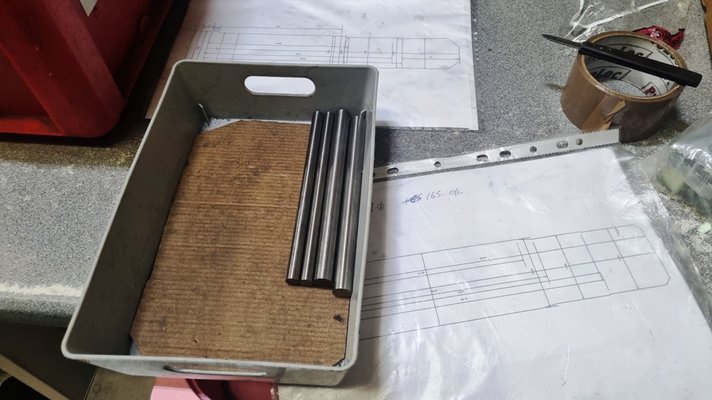northwest
Searching for the Holy Grail.........
- Messages
- 6,685
- Location
- Manchester UK

Having clean, bare metal is definitely a prerequisite for getting consistent plating results, as is a clean solution, free of contaminants. From what I've been reading, most plating and plating-related solutions should keep quite well if kept tightly covered, and some solutions can be easily rejuvenated/replenished, rather than replaced. I'm just getting started with doing my own plating, so still more to learn.^ It'll be interesting to see the results you get. I bought a kit from Gateros some years ago and have mixed results, but I think that's down to how well I can clean the items before they go in. I'm a bit short of space to have it set up at the moment, so mine was set up and taken down as needed. I wish I'd found space over summer as I have a few things that need to be done and for some reason I don't like leaving it set up in the cold weather as I'm not sure what the effect on the chemicals would be. As they're stored in the same shed that they'd be used in, arguably they're getting down to the same temperature, maybe a little higher when stored in sealed containers in closed cupboards.


That looks like a very 'optimistic' depth of cut and feed rate for a flycutter on something X1 sized!A piece of 3/8" to ~8mm as though why not give it a go with my diy fly cutter (aka lathe boring bar clamped in a crude piece) and save £15 on ebay and not fussed about finish as have other side for mounting surface...
View attachment 468588
View attachment 468589
Now paid double what the right size piece would have cost me
View attachment 468590View attachment 468591
Yea I could have done a much better job but I had no motivation to spend hours slowly going back and forth especially without power feed lol so just set it to a deep cut and very slowly went across it.That looks like a very 'optimistic' depth of cut and feed rate for a flycutter on something X1 sized!
Flycutters are handy, but looking at that pic, more spindle speed, less depth of cut, and lower feedrate.
I wouldn't worry about any theoretical spindle speed when flycutting on aluminium. Just run the spindle as fast as possible (usually the lack of balance will be the limiting factor on small mills), err on the side of caution for depth of cut/feedrate, and give it the occasional squirt of WD40/<insert light maintenance spray/release oil of choice> to stop swarf sticking to the cutter (plus a blast of air, if available, to keep the surface clear will also help with the finish).
It's a lot easier when it says T"EA" rather than "EARL GREY"
I can't imagine anyone would ever be willing to pay enough to make it worth it. Even if I only valued my time at minimum wage then (working purely with hand tools) the labour cost would be well over £100 which is a lot more than most people would spend on a tea caddy. I'll keep making whatever I want to make and it can remain as something I enjoy doing rather than something I do for money.Are you going to be taking commissions?




